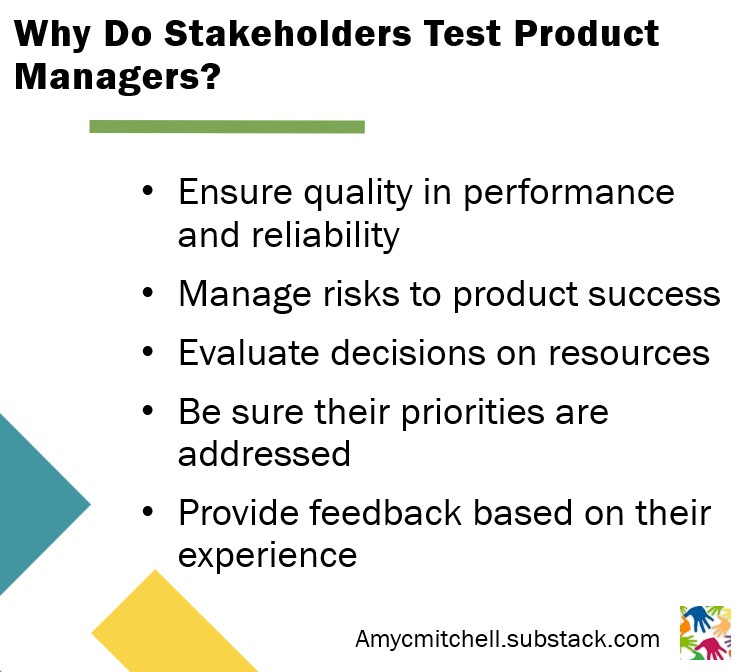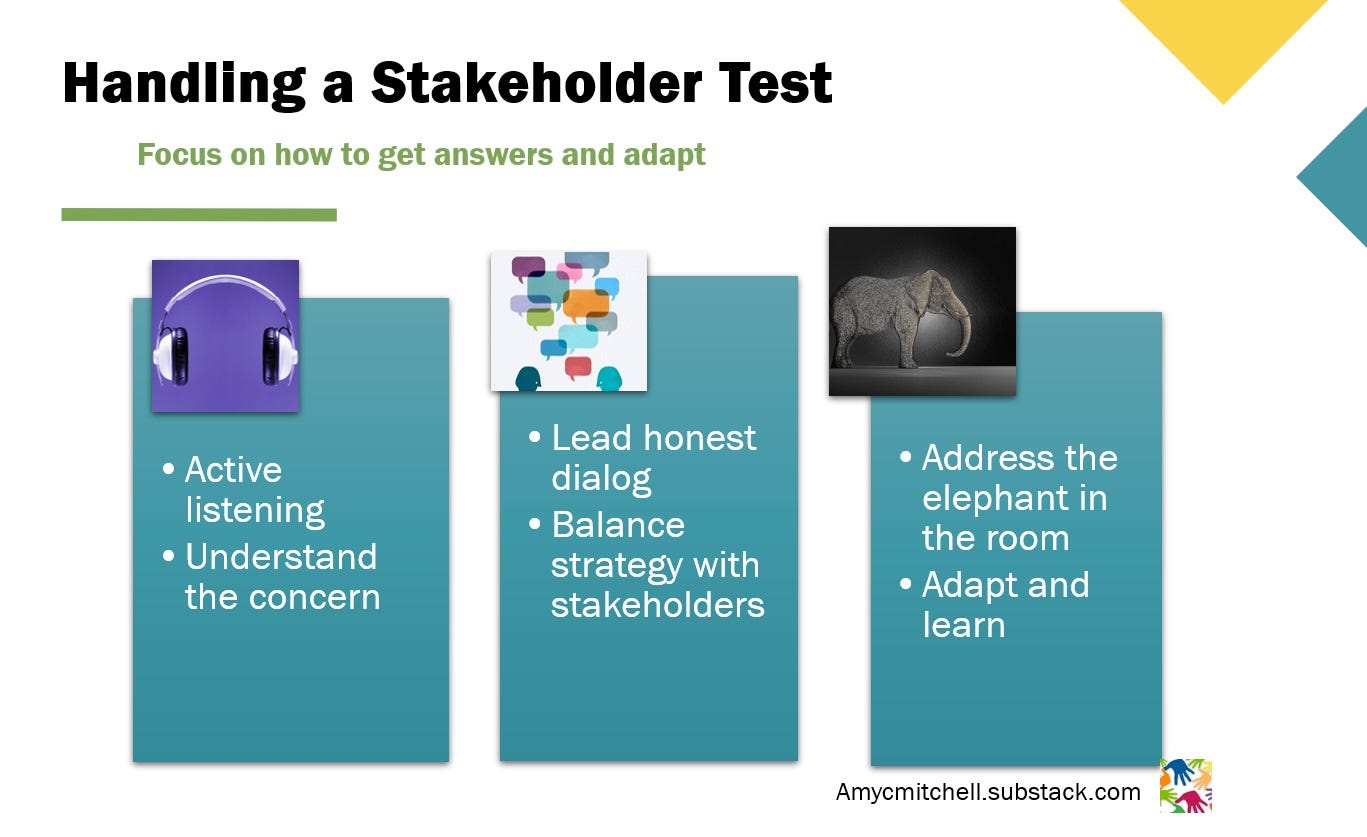It is a deer-in-the-headlight moment. You are presenting product status in a quarterly business review. The key stakeholders have a few questions:
What about this will increase sales?
How will you improve quality compared to a different product?
Why do you forecast x% growth in revenue?
Who did you talk to in the organization about this?
You had diligently prepared yourself for questions on each slide. You weren't prepared for questions outside of your product and your organization.
How can you have answers to all these questions? The short answer is: Don't try to have all the answers.
When you get these kinds of questions, your stakeholders are evaluating your strategy and decisions. Testing a product manager is a key process for stakeholders.
Why Do Stakeholders Test You?
Looking at this from the stakeholders' perspective, they need every product delivered with high quality and meeting their business objectives. In fast-paced organizations, the stakeholders need every product manager to be accountable for product outcomes.
Stakeholders need to take in your product status in the context of the organization, the market, and business goals. They must understand important topics from their perspective.
Stakeholders need to test product managers to avoid risks. For example:
Missed growth opportunity
Product that doesn't fulfill its intended purpose
Decisions leading to wasted resources
Risk exposure for the organization
Lack of accountability for the product outcome
By testing you, the product manager, stakeholders can mitigate these risks and ensure successful product outcomes.
How Do Product Managers Handle Tests from Stakeholders?
If stakeholders need to test product managers to be sure they have the best product outcomes, then shouldn't the product manager have all the answers?
No, product managers need to know HOW to get the answers and how to adapt.
If you are getting tested by your stakeholders to the point that you don't know the answer, then you have a great opportunity to engage further!
It might feel like you have a tiger-by-tail or you are in a dangerous situation. You can take steps to respond to the stakeholder test effectively.
Handling a Test - Active Listening
Listen to the stakeholder questions with all your senses. Their words, their tone of voice, their body language, and how they react give you clues to make the best response.
Keep your response factual and non-defensive. If the stakeholder is missing facts, then you might have an opportunity to communicate missing information.
Generally make note of the stakeholders' questions. You don't need to respond to every concern. Often your best answer is to take an action item to come back later.
Handling a Test - Honest Dialog and Collaboration
Honest dialog to review facts and multiple perspectives is valuable when your stakeholders are testing you. You can use the stakeholders' expertise and resources for the next steps.
As the dialog continues, keep your overarching goals and strategy in mind. As you explore the broad questions from your stakeholders, it is easy to get sidetracked.
While navigating the test from your stakeholders, you are responsible for transparent communications on:
Expectations and product goals
Constraints such as resources and budget
Feedback on the tests from stakeholders
Fostering honest dialog is key to balancing the stakeholder interests with your product's strategic objectives!
Handling a Test - Adapt and Learn
The tests from your stakeholders are opportunities for improvement. Your stakeholders likely are asking about cross-over to other products and functions in your organization. As you investigate new cross-over opportunities, you can find innovations as you look beyond your product.
As you work through the stakeholder test, you are going to turn up obvious issues that people are aware of but avoid discussing. Some typical issues that are ignored until your test are:
Imbalance in sales compensation
Disconnect in priorities among organizations
Unintended consequences from prior decisions
Your open communication and adaptation pay off by handling these hidden issues.
Conclusion - Turning Tests into Collaboration
Your stakeholders are going to test you on every contact. Their job is focused on the best product outcome for customers and the organization. They test product managers to balance risk and meet business needs.
When tested by stakeholders, product managers don't need to know the answers on the spot. Product managers take these steps when tested:
Listen to understand the stakeholders' perspective
Lead honest dialog to reach shared goals
Adapt for continuous improvement
Stakeholder tests of product managers contribute to better product success for the organization.
Want to know what happened after a recent article? Premium subscribers get a peak behind the scenes of a recent newsletter. Last week’s backstory covers what is better with product management after doing it for 20 years. What's Changed in Product Management?
Connect to Amy on LinkedIn, Threads, Instagram and X/Twitter
Related articles:






